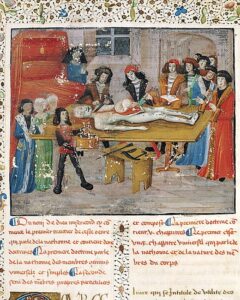In De intentione medicorum, Arnau de Vilanova laid the groundwork for his medical epistemology by considering whether medicine is a science (scientia) or an art (ars) and by questioning the differences between the physician’s and natural philosopher’s purposes. Galen, whom Arnau interprets in this sense. Arnau’s conclusion is that the physician is a practitioner of an art who is guided by his senses (artifex sensualis et operativus) and should therefore focus on knowledge of the perceptible particulars that are using for healing while ignoring everything that distracts him from his purposes. This is in contrast to the natural philosopher, who seeks an overall understanding of natural processes and their underlying cause. One example of this is the discord on the names of the main members between Arnau, for whom the only one is the heart, and Galen, who believed that in addition to the heart we should also include the liver, the brain and the testicles, since all of these organs house their corresponding natural faculties (vital, nutritional, animal and generative, respectively). While Averroes only accepts Aristotle’s truth, Arnau strives to reconcile both authorities: he first recognises that the heart is the remote beginning of all processes, yet he also notes that Galen’s interpretation is useful to the physician given that he has to use his senses to seek the cause of the disorders in the organ which is suffering in each case (the proximate principle). Meanwhile if they followed the philosopher’s criterion, they would always have to – futilely – treat the heart. As Arnau claimed, one of the possible ways of gaining perceptive knowledge is through dissection, but this is not possible with living persons and instead we must infer the state of their internal organs based on observing the health of the virtues. Does this reference mean that Arnau practised dissection in Montpellier? We do not know for certain, but it is possible given that we have proof that Henri de Mondeville made an anatomical demonstration there shortly thereafter, in 1304.
This Arnaldian “medical instrumentalism” (McVaugh) distanced medicine from both theoretical speculation and anti-intellectual empiricism. While Arnau considered medicine ars, he also equated the conception of medicine as a scientia he also equated the conception of medicine as a De intentione medicorum and other works.

Illustration: Dissection at the Faculty of Medicine in Montpellier, folio of La Grande Chirurgie by Guiu de Chaulhac (1363), Faculté de Medecine, Montpeller, Musée Atger, ms. H 184, f.14v.